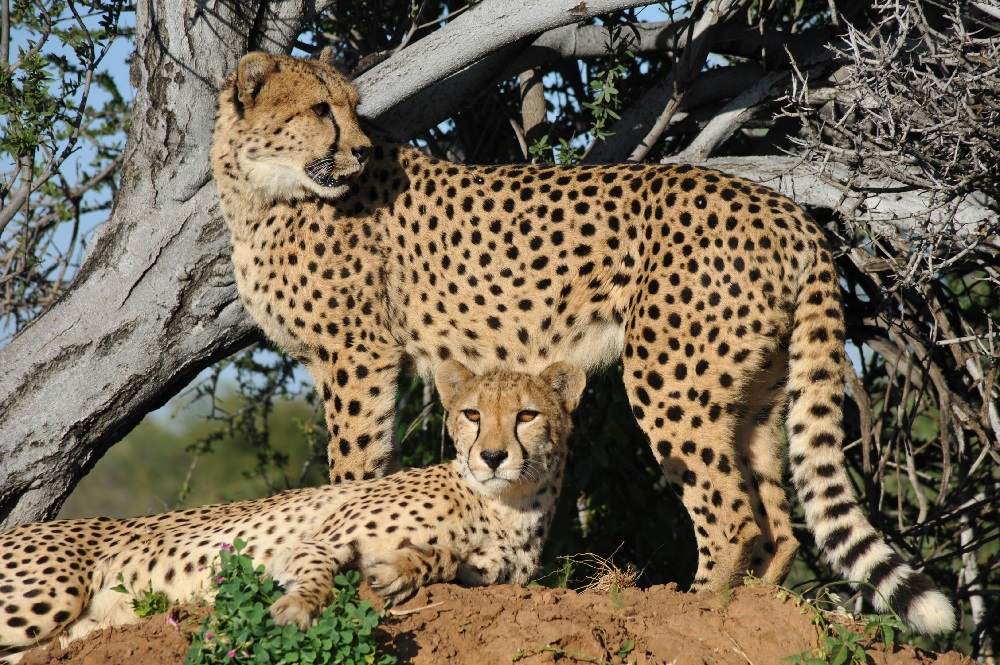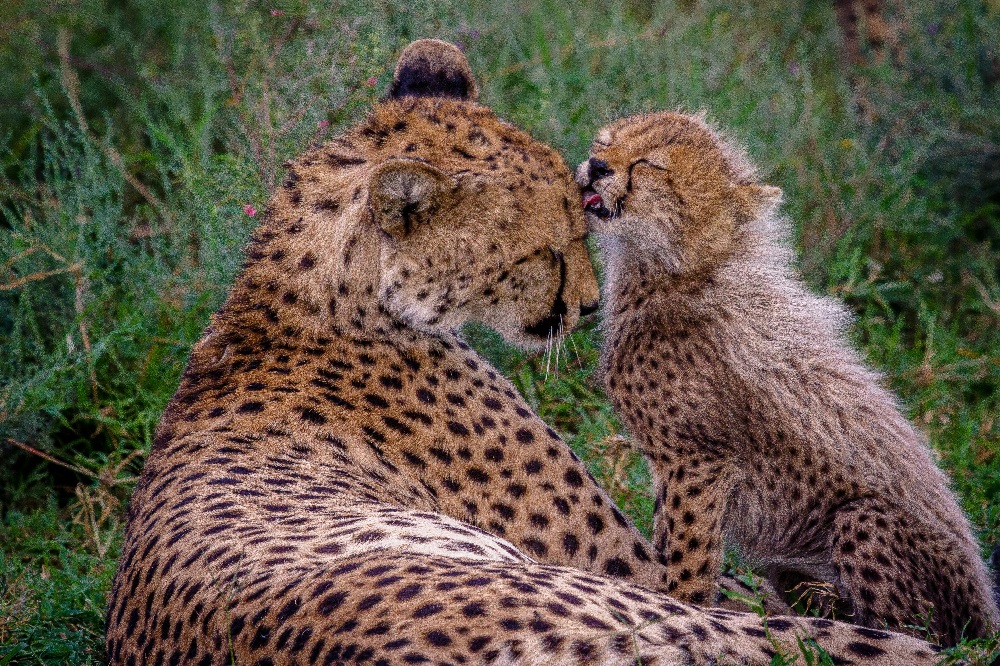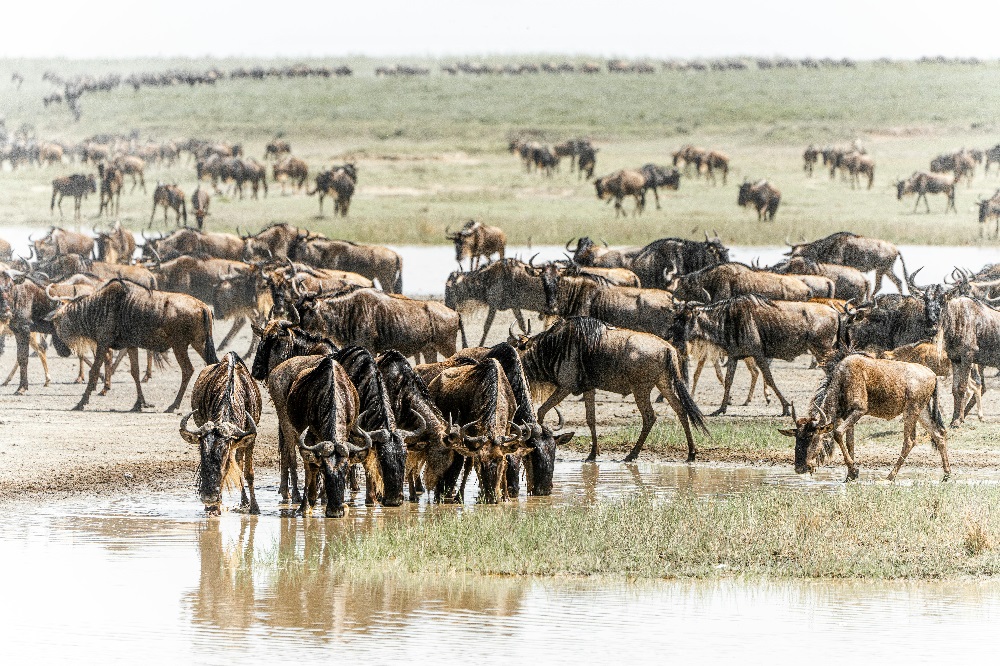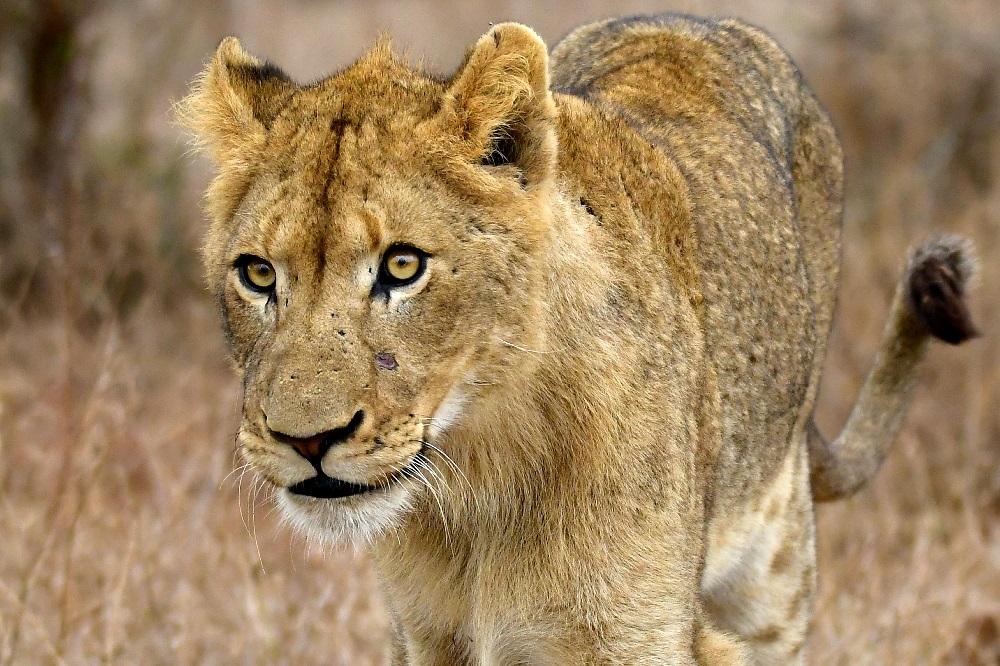The Serengeti’s reputation as one of the greatest wildlife reserves on Earth comes with a price tag that reflects both its exclusivity and its immense conservation efforts. Unlike smaller parks where tourism volume helps to lower costs, the Serengeti focuses on quality over quantity. The park spans over 14,000 square kilometers, and much of its infrastructure — including roads, ranger posts, and airstrips — must be built and maintained in a remote, protected ecosystem. Conservation fees are set higher to support anti-poaching patrols, habitat restoration, and community projects that give locals a stake in protecting wildlife. Another factor that drives costs up is the demand for premium safari experiences. Many visitors opt for luxury lodges or tented camps that offer private game drives, gourmet meals, and front-row views of wildlife spectacles like the Great Migration. The logistics of running such operations in a remote area add to the price — from transporting fresh food and supplies, to ensuring staff are well-trained and accommodations are eco-friendly. Lastly, the Serengeti’s unique seasonal events, such as river crossings or calving season, attract wildlife enthusiasts from around the world, which naturally pushes prices higher during peak periods. In essence, what you pay for in the Serengeti is not just a trip, but a carefully managed, once-in-a-lifetime experience in one of nature’s last great wildernesses.
Which safari is better, Kruger or Serengeti?
Comparing Kruger National Park in South Africa with Tanzania’s Serengeti is like comparing two masterpieces — each exceptional but distinct in style. Kruger offers accessibility and infrastructure that makes it easy for self-drive safaris, with well-maintained roads, rest camps, and a wide range of accommodation for various budgets. It’s a park where you can spot the Big Five in a single day thanks to its dense wildlife populations. The Serengeti, on the other hand, is less about quick sightings and more about witnessing nature on an epic scale. It’s a place where endless plains meet ancient migration routes, and where animals follow seasonal rhythms that have existed for millennia. While Kruger’s wildlife is equally spectacular, it doesn’t host anything quite like the Great Migration, where over two million wildebeest, zebras, and gazelles move in a massive loop across Tanzania and Kenya. Serengeti safaris tend to feel wilder and more remote, with fewer vehicles in most areas compared to Kruger’s busier roads. If you value ease, affordability, and year-round viewing convenience, Kruger might be the better choice. If you crave vast open landscapes, raw wilderness, and nature’s grandest wildlife event, the Serengeti will likely steal your heart. Ultimately, the choice depends on whether you prefer comfort and accessibility or untamed, cinematic adventure.
Is Masai Mara cheaper than Serengeti?
The Masai Mara, located in Kenya, generally comes in at a lower cost than the Serengeti, but the price difference is tied to scale, logistics, and park management policies. The Mara covers about 1,510 square kilometers — a fraction of the Serengeti’s size — which means shorter travel distances and more concentrated wildlife viewing. Park fees in the Mara tend to be lower, and because it’s relatively close to Nairobi, transportation costs are reduced. This proximity also means a wider range of accommodation is available, from budget-friendly camps to luxury lodges, allowing travelers more flexibility in tailoring their expenses. The Serengeti, by contrast, often requires internal flights or long drives, especially if you want to reach remote areas or follow the migration. While you can find budget options in both destinations, the Serengeti’s focus on low-impact, high-value tourism pushes average prices higher. That said, the Mara’s lower cost doesn’t mean a lesser experience — during certain times of the year, particularly the migration season between July and September, the Mara offers phenomenal wildlife encounters, including the dramatic river crossings at the Mara River. If budget is a primary consideration, the Mara is more wallet-friendly, but those willing to pay more for longer stays and greater remoteness may find the Serengeti worth the extra investment.
What is the most beautiful part of the Serengeti?
Beauty in the Serengeti takes many forms, and the most stunning part of the park often depends on the time of year and the experiences you seek. The southern Serengeti, particularly the Ndutu region, transforms into a lush green paradise during the calving season from December to March, when hundreds of thousands of wildebeest give birth. This spectacle is not only visually breathtaking but also attracts predators, creating intense and dramatic wildlife scenes. The central Serengeti, or Seronera Valley, is a year-round hub for wildlife and is famous for its classic savannah landscapes dotted with acacia trees and granite kopjes, where lions bask in the sun. The western corridor offers a more secluded feel, with the Grumeti River and its massive crocodiles adding a raw, untamed beauty to the region. The northern Serengeti is perhaps the most awe-inspiring during the migration season between July and October, when herds cross the Mara River in a heart-pounding display of survival. Each region has its own charm, but for many, the northern Serengeti during the river crossings is the park at its most beautiful and dramatic — a reminder that beauty in nature is often intertwined with struggle and triumph.
Which balloon ride is better, Masai Mara or Serengeti?
Hot air balloon safaris are among the most magical ways to experience both the Masai Mara and the Serengeti, but the Serengeti offers a more expansive and varied canvas for this airborne adventure. In the Mara, balloon rides typically cover a smaller area due to the reserve’s size, but they provide an incredible perspective over the Mara River, its forested banks, and the surrounding savannah teeming with wildlife. The Serengeti, on the other hand, offers a sense of boundless space as you drift over seemingly endless plains, scattered herds, and occasional predator sightings. The northern Serengeti, in particular, during migration season, is an unforgettable location for ballooning, where you might witness wildebeest and zebra herds stretching to the horizon. In the central Serengeti, balloon rides reveal intricate ecosystems, from kopjes to acacia woodlands, with the added thrill of spotting lions or elephants from above. While both destinations deliver breathtaking experiences, the Serengeti’s scale, diversity of habitats, and sheer magnitude of wildlife give it an edge for those seeking grandeur. That said, the Mara’s smaller size means balloon rides can feel more intimate and concentrated, making it a strong contender for travelers with less time.
Is it better to do a safari in Kenya or Tanzania?
Choosing between Kenya and Tanzania for a safari often comes down to what kind of experience you’re looking for, as both countries offer exceptional wildlife, landscapes, and hospitality. Kenya’s parks, including the Masai Mara, Amboseli, and Tsavo, are generally more accessible, with well-developed tourism infrastructure and shorter travel distances between major attractions. This makes it possible to combine multiple parks in a single trip without spending too much time on the road. Tanzania’s Serengeti, Ngorongoro Crater, and Tarangire deliver a more rugged, expansive safari feel, with fewer vehicles in many areas and a stronger emphasis on multi-day immersive experiences. Kenya is ideal if you’re short on time but still want outstanding game viewing, especially during the Mara’s migration season. Tanzania is perfect for those who want to follow the migration over longer stretches, witness diverse ecosystems, and enjoy a sense of remoteness. For many travelers, the ultimate safari combines both — starting in Kenya’s Mara and crossing into Tanzania’s Serengeti to follow the migration in its full cycle.
Is Kenya or Uganda better for safari?
Kenya and Uganda each offer extraordinary safari experiences, but they shine in different ways. Kenya is home to the world-famous Masai Mara, Amboseli with its iconic views of Mount Kilimanjaro, and Tsavo’s dramatic landscapes. Game viewing here is consistent, with high densities of big cats and easy access from Nairobi. It’s particularly suited for travelers whose main focus is traditional savannah safaris and the Great Migration.
Uganda, by contrast, offers a more diverse mix of experiences that go beyond the savannah. While it has classic game parks like Queen Elizabeth National Park and Murchison Falls, its crown jewel is gorilla trekking in Bwindi Impenetrable National Park. This once-in-a-lifetime encounter with mountain gorillas is something Kenya cannot offer. Uganda’s landscapes are also varied — from lush rainforests to crater lakes and the mighty Nile River. However, road travel between parks in Uganda can be longer and more challenging, and the infrastructure is not as developed as Kenya’s. If your dream is to see the migration or enjoy shorter travel times between parks, Kenya might be better. If you want a safari that combines wildlife drives with primate tracking and a wilder, less commercialized feel, Uganda is hard to beat.
Which African country is best for wildlife safari?
The answer to which African country is “best” for a wildlife safari depends on personal preferences, but a few nations consistently rise to the top for diversity, accessibility, and quality of experience. Tanzania is a strong contender thanks to the Serengeti, Ngorongoro Crater, and Selous Game Reserve, offering both high-density wildlife areas and vast, untouched wilderness. Kenya matches this with the Masai Mara, Amboseli, and Samburu, coupled with excellent infrastructure and guiding.
Botswana is another leader, famed for its low-impact, high-quality safaris in places like the Okavango Delta and Chobe National Park, where crowding is minimal and the focus is on exclusive, intimate wildlife encounters. South Africa’s Kruger National Park is unmatched for accessibility and self-drive options, making it ideal for first-time visitors or those on a tighter budget. Namibia offers surreal landscapes in Etosha National Park and unique desert-adapted species. For primate lovers, Uganda and Rwanda are the obvious choices. Ultimately, if your goal is the Great Migration, Tanzania and Kenya are unmatched. For luxury and remoteness, Botswana takes the crown. For variety and affordability, South Africa shines. The “best” is the one that aligns with your dream safari vision.
Why is Tanzania safari more expensive than Kenya?
Several factors make Tanzania safaris, especially in the Serengeti, pricier than those in Kenya. The first is park size and remoteness. Tanzania’s reserves, such as the Serengeti and Ruaha, are vast and often require longer drives or internal flights to access, which adds to transport costs. The government also adopts a high-value, low-impact tourism model, setting higher park fees to limit visitor numbers and reduce environmental pressure. These fees, which can be upwards of $70 per day for foreigners, directly fund conservation and community projects.
Another reason is that many Tanzanian lodges and camps operate in extremely remote areas, requiring significant logistical effort to supply food, water, and other necessities. This remoteness enhances the wilderness feel but comes at a premium. Kenya’s parks are more accessible from Nairobi, reducing travel costs, and competition between the larger number of lodges helps keep prices lower. In Tanzania, fewer operators and the focus on exclusivity mean rates remain higher. For travelers, this translates to a more secluded, immersive safari, albeit at a steeper price.
Is Tanzania or South Africa better for safari?
Tanzania and South Africa are both exceptional safari destinations but cater to slightly different styles of travel. Tanzania offers vast, unfenced wilderness areas and the drama of the Great Migration. Its parks, such as the Serengeti, Tarangire, and Selous, feel untamed and timeless, with fewer vehicles in most areas compared to South Africa’s busier reserves. However, this wildness comes with higher costs and longer travel times between parks.
South Africa’s Kruger National Park and surrounding private reserves offer exceptional wildlife viewing with top-tier guiding and a mix of luxury and budget options. The infrastructure is highly developed, with tarred roads, abundant accommodation, and the option for self-drive safaris. South Africa is also malaria-free in certain areas, making it attractive for families. If your priority is raw wilderness, seasonal spectacles, and fewer crowds, Tanzania may be the better choice. If you want convenience, diverse activities (including wine country and coastal visits), and year-round accessibility, South Africa excels.
Is it worth going to Serengeti?
Absolutely — the Serengeti is not just worth visiting; for many, it is the very definition of a safari. It is a place where wildlife roams free across one of the most pristine ecosystems left on Earth, where the horizon seems endless, and where every game drive can bring an encounter you’ll never forget. The park’s year-round wildlife density means that even outside the migration, you can spot lions, leopards, elephants, giraffes, buffalo, and a rich variety of antelope and bird species. During the Great Migration, it transforms into a stage for one of nature’s most awe-inspiring events, drawing wildlife enthusiasts, photographers, and filmmakers from around the globe.
What sets the Serengeti apart is the sense of scale and freedom it imparts — there are no fences to confine animals, and the rhythms of life here are dictated by the seasons rather than human interference. The landscapes shift from golden plains to lush woodlands, each supporting unique wildlife. Beyond the animals, there’s an intangible magic in the Serengeti’s sunrises and the sound of lions roaring at night. For those who dream of experiencing Africa in its most iconic and cinematic form, the Serengeti is not just a destination — it’s a pilgrimage.





